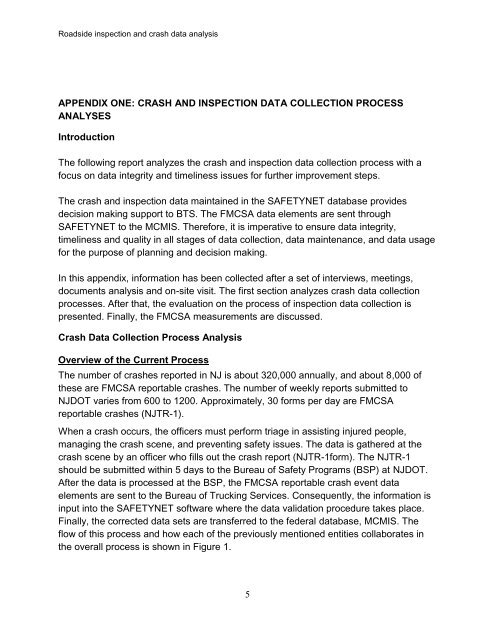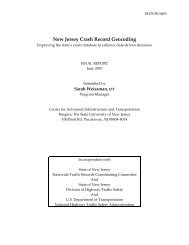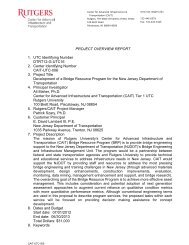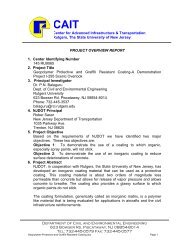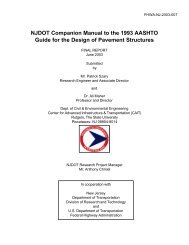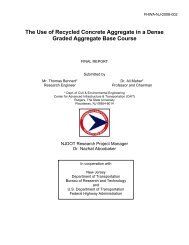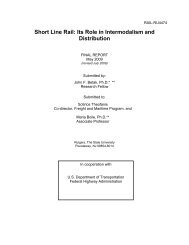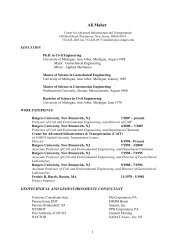ROADSIDE INSPECTION DATA AND CRASH DATA ANALYSIS - CAIT
ROADSIDE INSPECTION DATA AND CRASH DATA ANALYSIS - CAIT
ROADSIDE INSPECTION DATA AND CRASH DATA ANALYSIS - CAIT
Create successful ePaper yourself
Turn your PDF publications into a flip-book with our unique Google optimized e-Paper software.
Roadside inspection and crash data analysisAPPENDIX ONE: <strong>CRASH</strong> <strong>AND</strong> <strong>INSPECTION</strong> <strong>DATA</strong> COLLECTION PROCESSANALYSESIntroductionThe following report analyzes the crash and inspection data collection process with afocus on data integrity and timeliness issues for further improvement steps.The crash and inspection data maintained in the SAFETYNET database providesdecision making support to BTS. The FMCSA data elements are sent throughSAFETYNET to the MCMIS. Therefore, it is imperative to ensure data integrity,timeliness and quality in all stages of data collection, data maintenance, and data usagefor the purpose of planning and decision making.In this appendix, information has been collected after a set of interviews, meetings,documents analysis and on-site visit. The first section analyzes crash data collectionprocesses. After that, the evaluation on the process of inspection data collection ispresented. Finally, the FMCSA measurements are discussed.Crash Data Collection Process AnalysisOverview of the Current ProcessThe number of crashes reported in NJ is about 320,000 annually, and about 8,000 ofthese are FMCSA reportable crashes. The number of weekly reports submitted toNJDOT varies from 600 to 1200. Approximately, 30 forms per day are FMCSAreportable crashes (NJTR-1).When a crash occurs, the officers must perform triage in assisting injured people,managing the crash scene, and preventing safety issues. The data is gathered at thecrash scene by an officer who fills out the crash report (NJTR-1form). The NJTR-1should be submitted within 5 days to the Bureau of Safety Programs (BSP) at NJDOT.After the data is processed at the BSP, the FMCSA reportable crash event dataelements are sent to the Bureau of Trucking Services. Consequently, the information isinput into the SAFETYNET software where the data validation procedure takes place.Finally, the corrected data sets are transferred to the federal database, MCMIS. Theflow of this process and how each of the previously mentioned entities collaborates inthe overall process is shown in Figure 1.5


